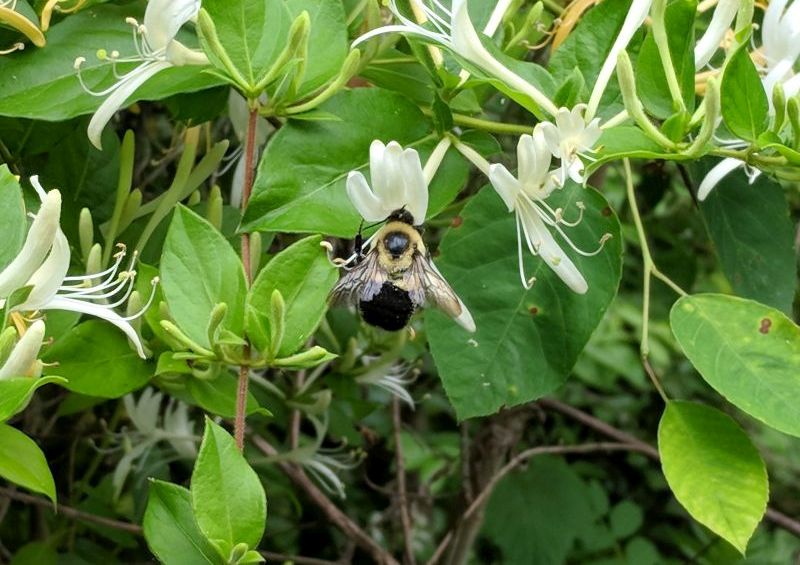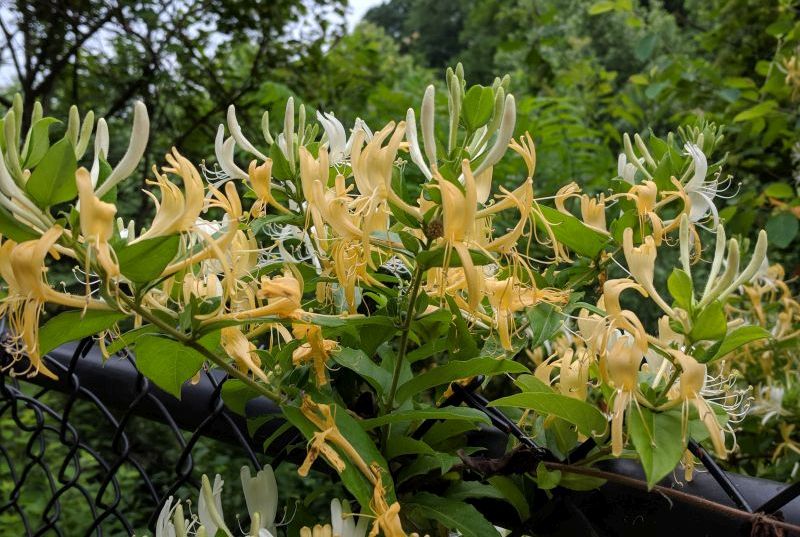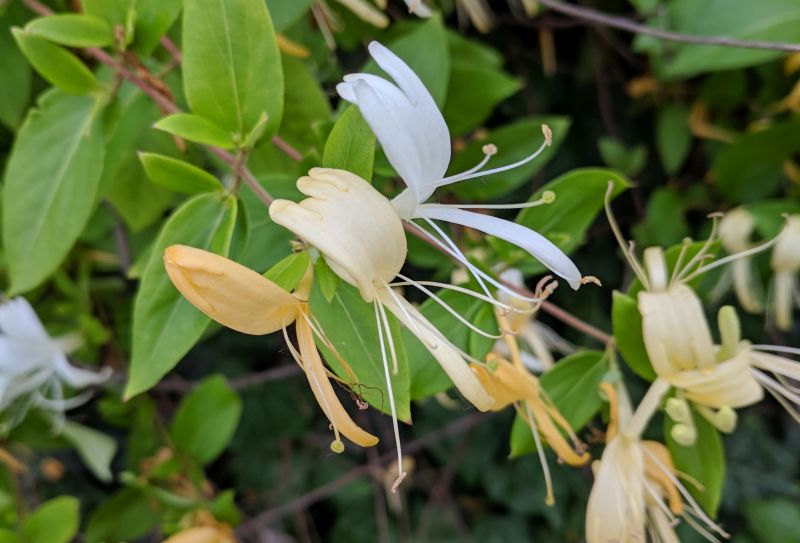
The air smells sweet this weekend. Japanese honeysuckle (Lonicera japonica) is in bloom.
Although it’s invasive, I always enjoy the smell and taste of honeysuckle nectar. So do bees and moths who are naturally attracted to white flowers.
So why do honeysuckle flowers come in two colors, gold and white?

I decided to watch a bumblebee visit the flowers and see what happened. Though she had plenty of golden flowers to choose from she only sipped at the white ones (above).
Then I looked at the flowers. Are the gold ones the old ones?
- The flowers at the tips of the branches (i.e. new growth) are white. The gold flowers are on the older parts of the vine.
- The buds are white just before they open.
- The faded flowers are always gold.
- I found a set of flowers (blooms in sets of 4, two on each side of the stem) where two of the four had been covered by leaves and were inaccessible to pollinators. The visible flowers were gold, the inaccessible flowers where white.
So the white flowers are new and unfertilized, asking the bees to visit them. The gold flowers are old, already fertilized and beginning to fade.
Honeysuckle is color coded for bees.
p.s. Taste? As a kid I learned to lick a drop of nectar by pulling off a single flower, pinching the stem-end and pulling the pistil out of the bottom. The nectar beads up as the pistil emerges. Yum! … I tested a golden flower: Did it still have nectar? yes.
(photos by Kate St. John)
UPDATE, June 8. 2018: Further bolstering my pollinated-color theory, I found a flower turning yellow on the same stem with one white and one gold flower.
